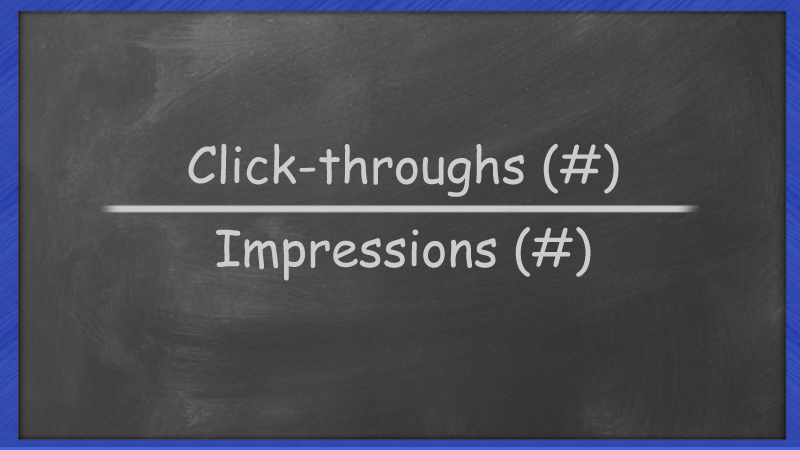Definition
Click-through rate (CTR) is a way of measuring the success of an online advertising campaign for a particular website as well as the effectiveness of an email campaign by the number of users that clicked on a specific link.[1]
 Purpose
Purpose
The purpose of click-through rates is to capture customers’ initial response to websites. Most commercial websites are designed to elicit some sort of action, whether it be to buy a book, read a news article, watch a music video, or search for a flight. People generally don’t visit a website with the intention of viewing advertisements, just as people rarely watch television with the purpose of consuming commercials.[2]
Marketers want to know the reaction of the web visitor. Under current technology, it is nearly impossible to fully quantify the emotional reaction to the site and the effect of that site on the firm’s brand. One piece of information that is easy to acquire, however, is the clickthrough rate. The clickthrough rate measures the proportion of visitors who initiated action with respect to an advertisement that redirected them to another page where they might purchase an item or learn more about a product or service. Here we have used “clicked their mouse” on the advertisement (or link) because this is the generally used term, although other interactions are possible.
Construction
The click-through rate is the number of times a click is made on the advertisement divided by the total impressions (the times an advertisement was served):
Click-through rate (%) = Click-throughs (#) / Impressions (#)
Email Click-Throughs
Total email click-throughs as a metric attempts to answer the question, ‘How many times did a person click on a link or multiple links within this email?’ This may or may not include clicks on unsubscribe links or other links and you may find it helpful to view click-through reporting by individual link. This metric is a whole number in the form ‘100,000’ or as an email clickthrough rate percentage in the form ‘10%.’ The denominator is email delivered and this percentage may exceed 100%.
Unique email click-throughs as a metric attempts to answer the question, ‘How many unique people clicked on a link or multiple links within this email?’ To illustrate, if one person clicked on two links, this would only count as one unique clickthrough. If one person clicked on the same link twice, this would only count as one unique clickthrough. This metric is a whole number in the form ‘100,000’ or as a unique email click-through rate percentage in the form ‘10%.’ The denominator is email delivered.[3]
See also
References
- ^ American Marketing Association, AMA Dictionary. (April 2014).
- ^ Farris, Paul W.; Neil T. Bendle; Phillip E. Pfeifer; and David J. Reibstein (2010). Marketing Metrics: The Definitive Guide to Measuring Marketing Performance (Second Edition). Upper Saddle River, New Jersey: Pearson Education, Inc.
- ^ IAB. Email Campaign Performance Metrics Definitions. (April 2014).




